I spent a morning cutting drilling and welding the nuts onto one of the plates I'd made, only to realise that when I finally looked at the inside of the frame skin that it was double skinned, so there was no way a nut plate was fitting in there.
Hi welcome to my 1964 VW Type 2 split screen campervan restoration blog. This will be a record of the vans restoration, and hopfully share infomation about bringing a splitty back to life.
Fitting Safari Windows
Deck Lid Repair and Panel Beating
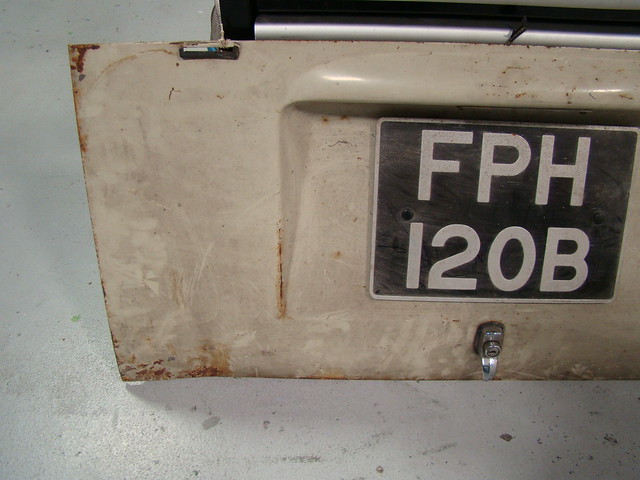
Here's my engine deck lid that got a small dent from one of those sneaky concrete post that creep up behind you when you're not looking and get in the way. It's a good job I didn't have my bumper fitted when I reversed into the post or I would have to bash the dent out of that instead of my engine deck lid and valance (English Sarcasm).
The inner skin around the dented area has rusted so thin that you can push a screw driver through it. It's like popping bubble wrap, you want to keep poking but shouldn't. So deciding before I pay £100 to £250 for a second hand rusted and dented engine lid to try my skills at repairing the one I've got. At least the oil covering the inside has saved most of the metal.
I started by grinding down a 5/32" HSS drill bit to a shallow point and drilling the spot welds untill I could see it just starting to cut the second layer of steel. I tried a few screw drivers and chisels till I settled on a podger or spike (used for aligning bolt holes and generally poking things) to lift the rolled seam away from the inner skin, and cut a channel at two points with a cutting disc.
Once the spot welds were popped with a chisel and the edge seam lifted clear with a pair of pliers the damaged channel section slid out with some persuasion. This then gave me a better view of the skin damage and all the hidden rust.
With the back channel out of the way I can now set about trying to straighted the skin, You have to bear in mind I haven't got a clue what I should be doing when it comes to panel beating. So using a hammer and block and a work bench, or to us the correct name of the dining table, I started hitting it at the top and worked my way down.
With a few positive taps it didn't take long to get the skin looking reasonably straight, although I did end up with a few high spots at the bottom edge from a little too much bashing. This was highlighted with a rub over with a block of wet and dry.
I'll cover how I dealt with panel beating the high spots soon….
Paint Colour Trial
Another roll of brown paper and a very quick rub down as I was getting impatient and wanted to see some paint on.
Time to reveal the work. I did make a muck up by stroking the paint when I thought it was dry, and creasing it. I then rubbed it back but then smeared it with thinners, then left fine scratches that were highlighted when I lacquered it.
With the van back inside I then spent the next day cutting back the lacquer to get rid of my muck ups and to get a mirror finish. The camera really shows the fleck in the black. The new paint is very smooth and tactile, each time I see (or stroke) it I'm more convinced it is right colour.
Bring on stripping and painting. : )
944 A Arm Fitting
Fitting Cargo Floor
I then painted all the cargo bay chaise the classic rust proof Ork Blood Red to keep away any evil spirits.
I clamped up my hand made strike plate and spot welded it on. Did I mention how much fun it is welding pieces of steel together with big copper probes that glow and spark all over the place. (I'd now put a smiley here if I had one handy)
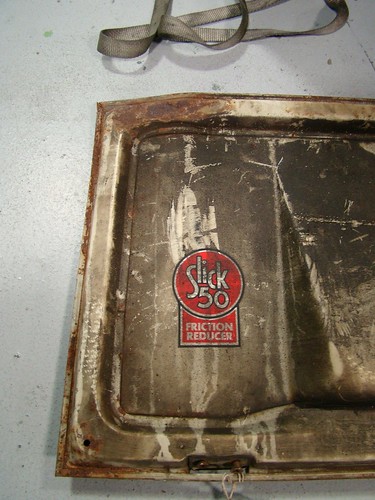
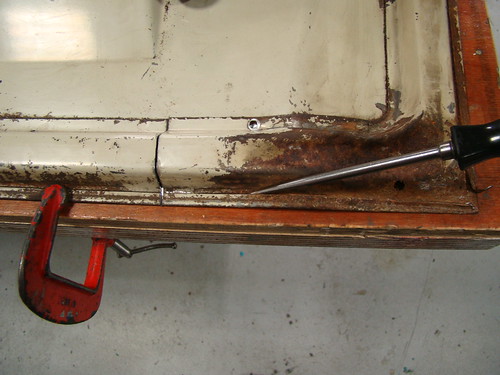
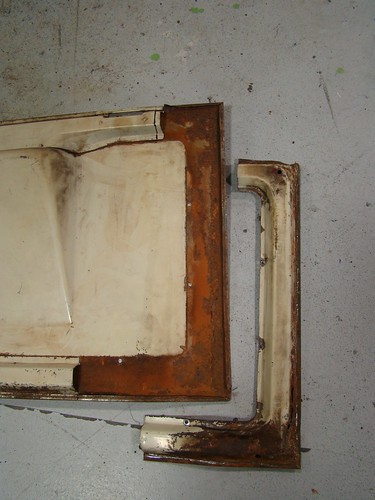


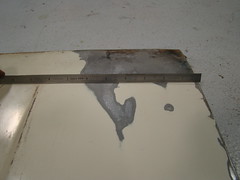
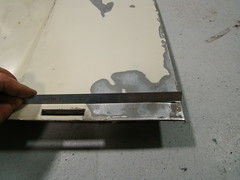








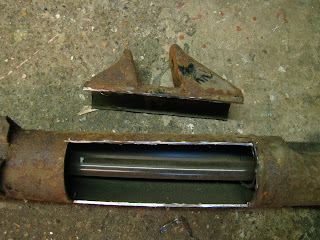.jpg)

